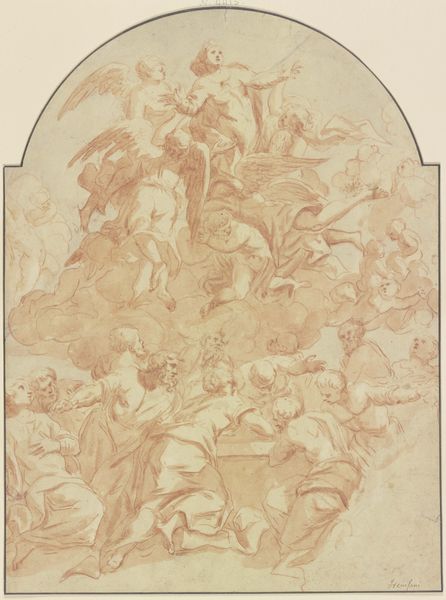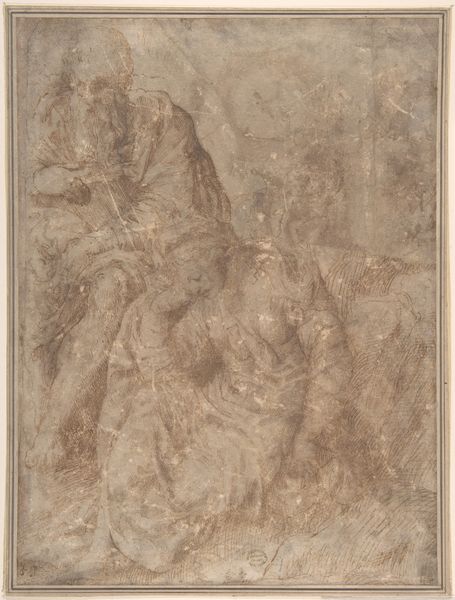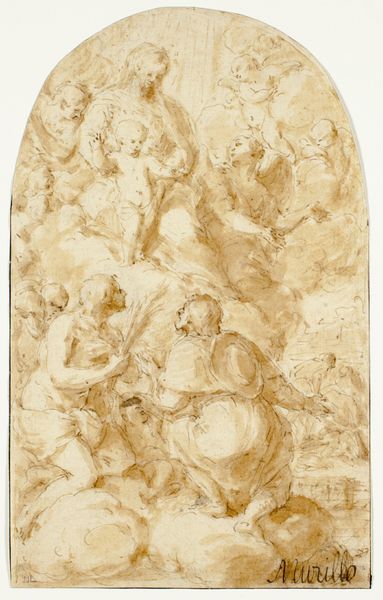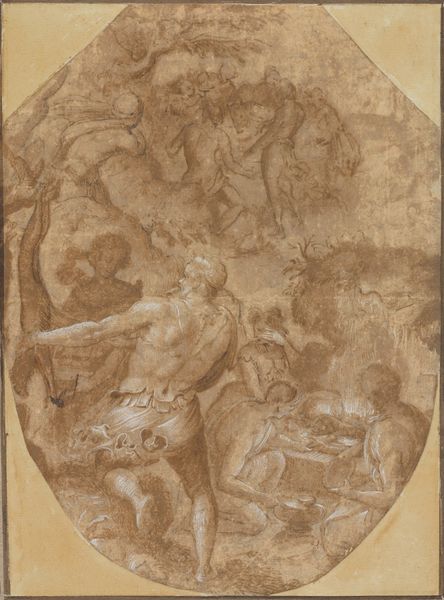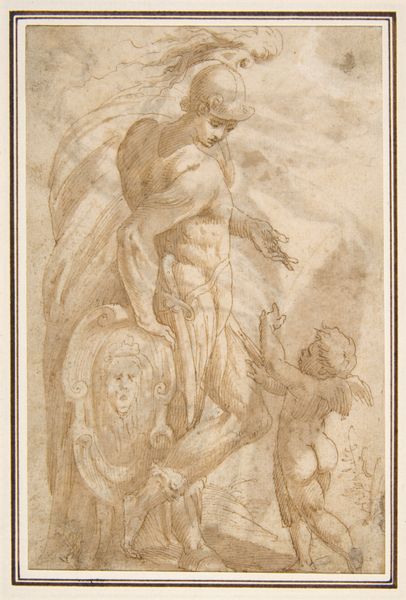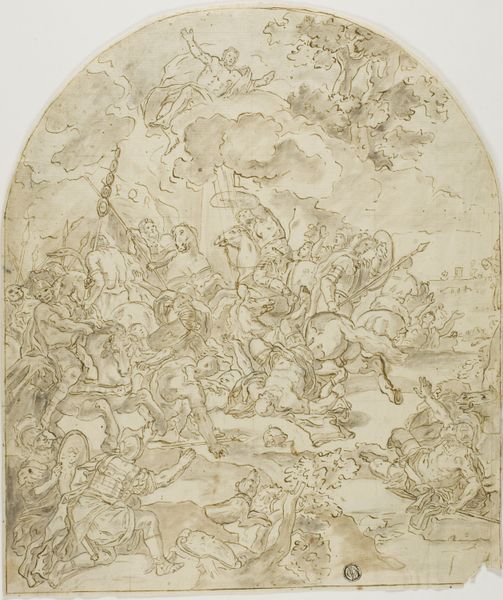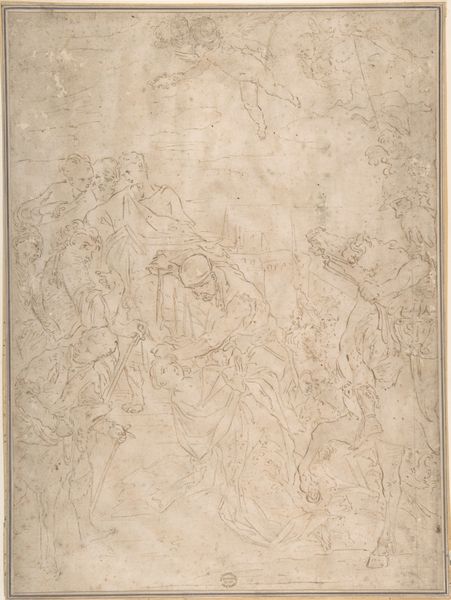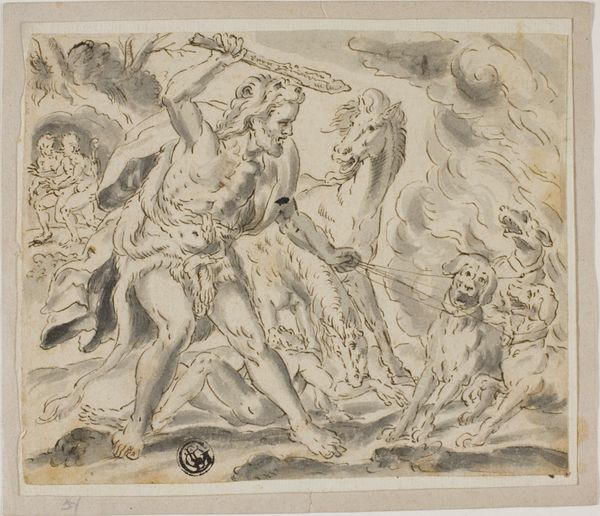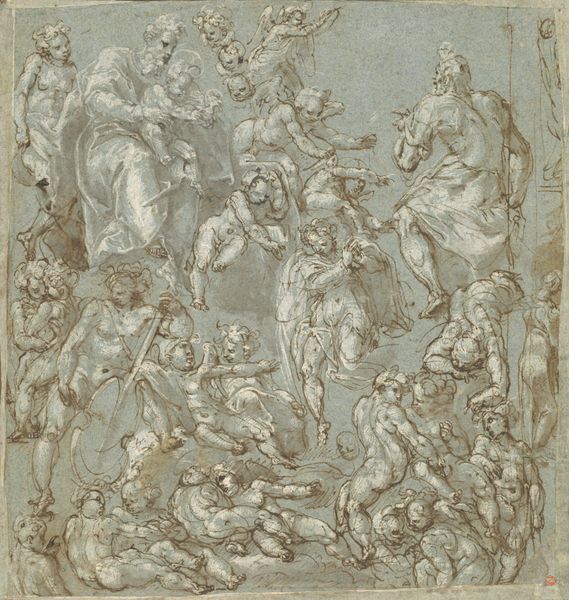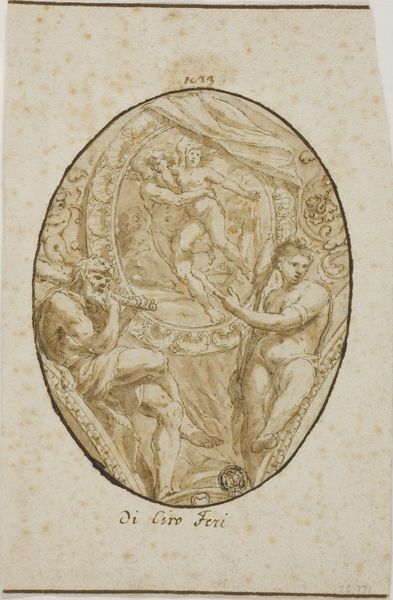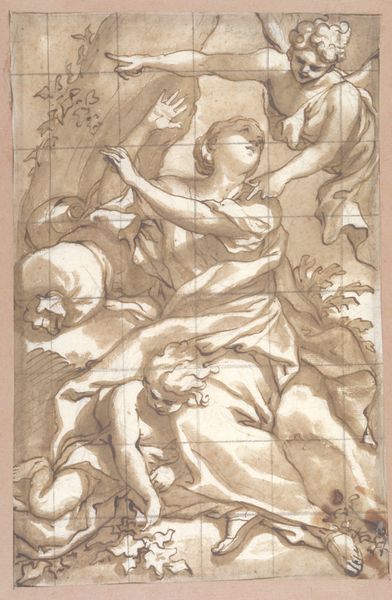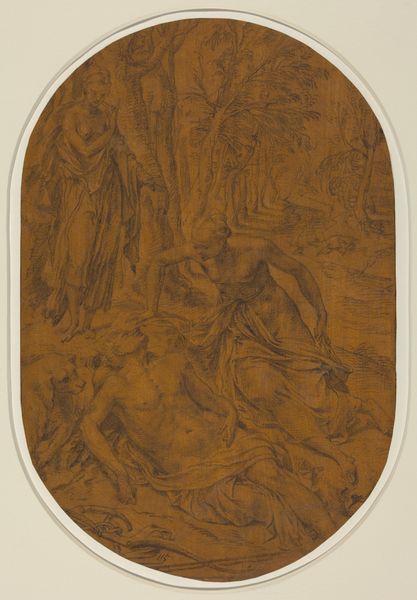
drawing, charcoal
#
drawing
#
allegory
#
baroque
#
charcoal drawing
#
figuration
#
charcoal
#
history-painting
Dimensions: overall (irregularly shaped): 26.5 x 15 cm (10 7/16 x 5 7/8 in.)
Copyright: National Gallery of Art: CC0 1.0
Editor: Here we have Johann Georg Bergmüller's 1726 drawing, "The Holy Angels Protecting a Hermit from Evils," rendered in charcoal. The ethereal quality is captivating, almost dreamlike. I'm curious about the history and what it represents to viewers of the time. What do you see in this piece from your perspective? Curator: I see a potent articulation of the relationship between the individual and divine authority, specifically how artistic representation bolstered the power of the Church. Look at the composition; it presents a clear hierarchy, from the vulnerable hermit below to the dominating angels and the all-seeing eye at the apex. Consider the socio-political function of such imagery during the Baroque period: the visual assertion of divine intervention reinforced societal structures. Editor: So it's more than just a religious scene, it is social commentary? Curator: Precisely. The image served as a didactic tool, visually encoding acceptable behaviors and belief systems. Bergmüller leverages the dramatic possibilities inherent within baroque aesthetics to present a visually compelling argument for adhering to established religious doctrine. How do you perceive the hermit's posture within this framework? Does his vulnerability serve a narrative purpose? Editor: It definitely makes him a figure needing protection. It really drives home that dependence on the Church. I didn’t initially see that layer of meaning. Thanks. Curator: It's about understanding how institutions and art production became entwined. Bergmüller was employed in an environment, full of cultural context and how images were intended to be consumed, further understanding their significance within its time.
Comments
No comments
Be the first to comment and join the conversation on the ultimate creative platform.
